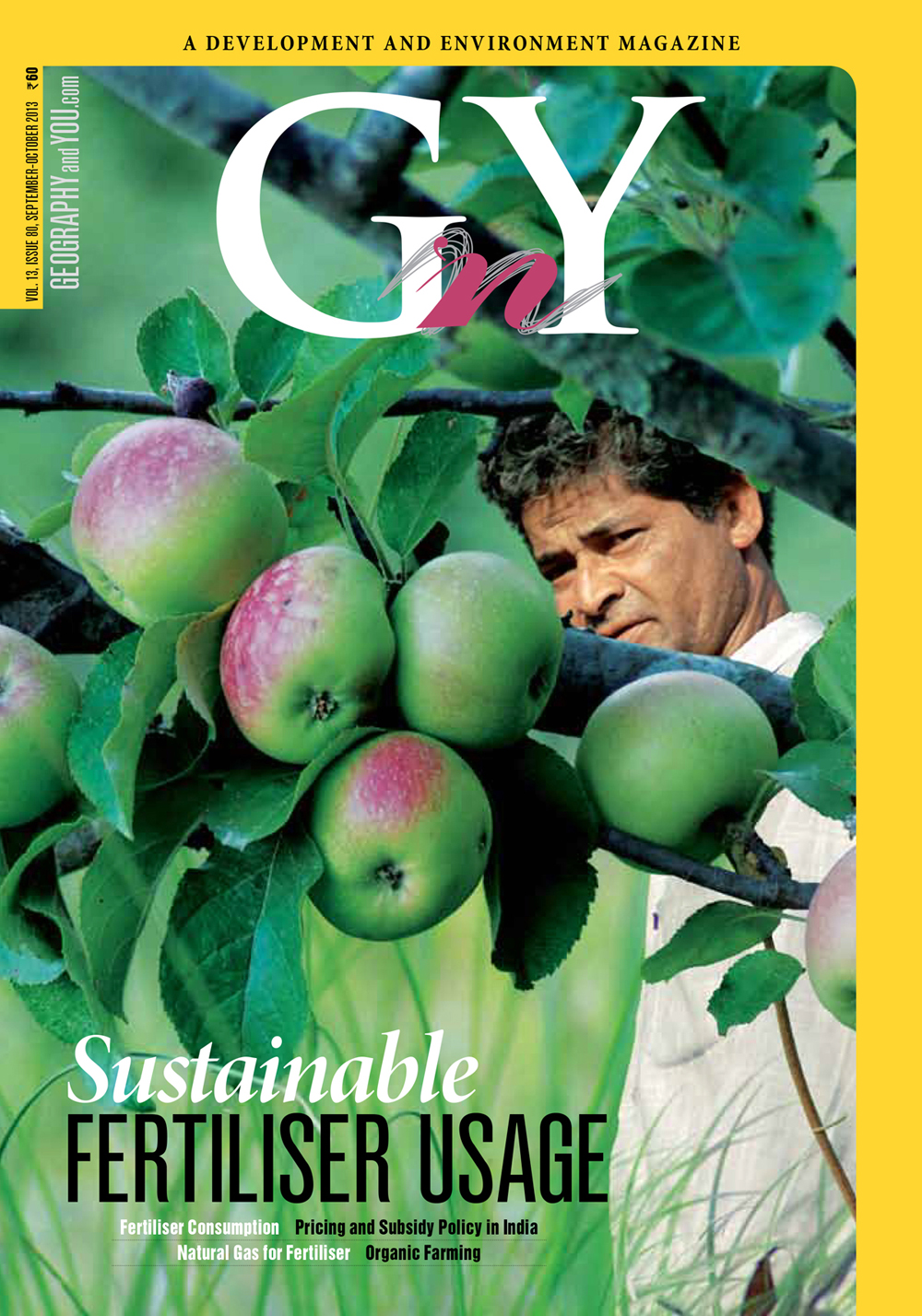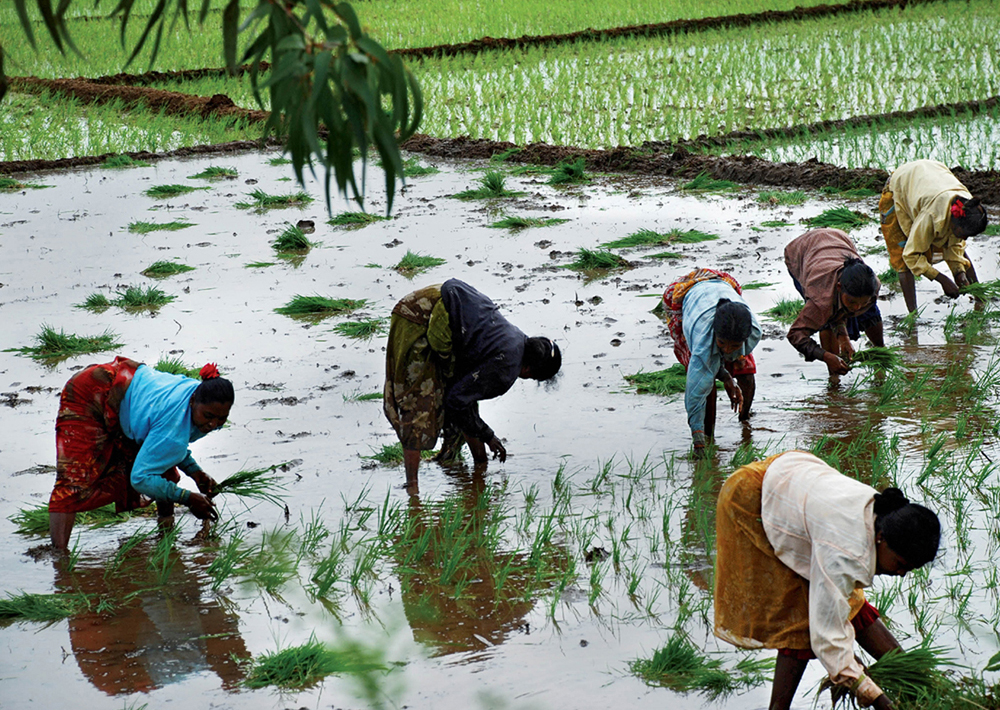
Inside this issue
Sustainable Fertiliser
Increasing use of fertilisers has led to a phenomenal growth in the food grain production over the last four decades. However, the pattern of fertiliser use varies widely from state to state. There is a need for balanced and integrated use of plant nutrients to ensure food security to the population in future.
With remarkable growth after the introduction of fertiliser responsive high yielding varieties of paddy and wheat in the mid 1960s, per hectare fertiliser consumption increased from 5 kg in 1965-66 to 141 kg in 2010-11. Government and industry made concerted efforts to promote balanced use of fertilisers by targeting to achieve the ideal nitrogen, phosphorus and potassium (NPK) ratio of 4:2:1 at the national level. Balanced fertiliser usage was however, severely hit with the government’s decision to decontrol phosphatic and potassic fertiliser which distorted nutrient prices and aggravated imbalanced fertiliser use.
Fertiliser was brought under Fertiliser Control Order (FCO) in 1957 to regulate its sale, price and quality. Various committees have been formed over the years to fulfill the objective of ensuring adequate quantity of fertilisers at fair prices to the farmers. Retention Pricing Scheme (RPS) implemented from 1977 led to a phenomenal increase in domestic production and consumption of fertilisers. But the subsidy bill kept on increasing significantly due to the rise in cost without corresponding rise in retail price. The fertiliser sector remained under government control for a long period and the cost plus approach with stringent regulations and procedures did not encourage any investment in the sector since the beginning of the 2000 decade. The fertiliser industry had hardly any scope to promote innovative products for balanced fertiliser usage.
India is heavily dependent on import of all primary energy resources—crude oil, coal and natural gas. There is a need to use the domestic energy resources specially gas judiciously. The paper provides justification on technical, financial and strategic grounds for using domestic gas for production of fertiliser. This would ensure affordable fertiliser to the farmers and augment the fertiliser security of the country.
Biofertiliser is a preparation of agriculturally useful microorganisms like nitrogen fixers, phosphorus solubilisers etc; and is one of the components of integrated nutrient management. The commercial production of biofertiliser was introduced in 1956 in India. With a production of 38000 t and with more than 150 commercial units engaged in it, biofertiliser usage is definitely looking up.
Nitrogen fertiliser has increased food production tremendously all over the world. However, it also contributes to climate change through emission of nitrous oxide and other greenhouse gases. Efficient management of nitrogen offers opportunities for climate change adaptation and greenhouse gas mitigation.
A series of post 1800 inventions of some key processes and materials led to suitable catalysts that revolutionised agriculture and paved the foundations of a fertiliser industry in Germany, Norway, UK and North America.
Organic farming
During the last two decades, there has been a paradigm shift in global communities towards environmental preservation and quality food. Growing concerns due to depleting resources, and deterioration of soil health and fertility has forced scientists and planners to look for alternatives. Organic agriculture emerges as one such alternative.
Using the vast resource of rooftops and kitchen gardens in urban and rural areas to promote swajaivik farming through intensive trainings.
Though organic farming in the Sundarban is bringing food security, economic uplift and increased protection against climate change, it is largely the women who are working themselves to the bone. Unfortunately women here have no definite property rights and are often in the danger of losing the fruits of years of hard work if divorced, widowed or when the sons get married.
India report
The modern sanitary pads being primarily plastics, clog up drainage and incinerating it leads to noxious air pollutants. Putting the used napkins in landfills adds toxins to the soil and groundwater. Without an environmentally safe disposable product, the spread of sanitary napkin usage would exacerbate the piling garbage at ground zero.
Strengthening the case that well-being should be a critical component of how the world measures its economic and social development, the 2013 World Happiness Report has identified the countries with the highest levels of happiness. India ranks at 111 out of the 156 countries studied.
Quantitative geography
This section brings to lights a few of the prominent figures that gave rise to what we know as the quantitative revolution in geography. It is with their path breaking work that we today see geography in a new perspective—one that defines in numbers the various spatial phenomenon.
Though there are some limitations of composite indices, they are an enabling tool for geographical regionalisation, a tool that is also becoming increasingly popular with policy makers. Development indices worked out using the human development index (HDI) and principal component analysis (PCA) have been compared in this article.
In brief
Organic farming is providing a good option for many by providing climate resilience in stressed water regimes as well as achieving a competitive market. If developed adequately, organic farming can bridge the nutrient gaps in inputs and usher in a new agricultural regime.
Earthworms feed on decaying organic material and deposit castings—a natural fertiliser. The process by which these earthworms can be cultured or used in composting pits, crates, tanks, concrete rings or any containers is commonly known as vermicompost. About 2500 species of earthworms have been id
Dear readers, Fertilisers, especially chemical fertilisers, in the environmental context is not a happy word. It is understood to be a cause of deteriorating soil and water quality apart from exacerbating climate change and adversely impacting human health. But, fertilisers are not bad at all–j

